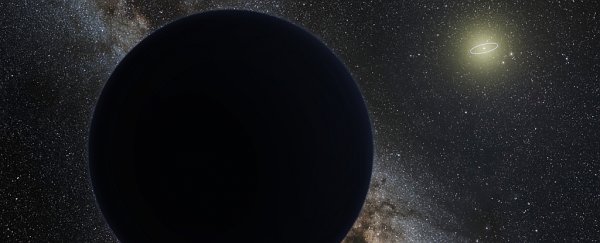There seems to be something large lurking in the far reaches of the Solar System, messing with the orbits of some of the Kuper Belt rocks out past Neptune. Some astronomers believe it's a planet, about five times the mass of Earth. They call it Planet Nine.
But finding this potential lurker is not so simple. From here, it would appear extremely small and faint, and we don't even know where in the sky we should be looking. Astronomers are searching (and finding some other really neat stuff in the process), but it's slow and painstaking work.
According to a new paper, though, there could be another way: NASA's Transiting Exoplanet Survey Satellite (TESS). And it's possible the planet has already been observed, and is hidden away in the TESS data.
You may be thinking "duh, it's a planet-hunting telescope", but looking for planets that are very far away, and looking for planets that are relatively close are two different things.
TESS looks for exoplanets using the transit method. It stares at sections of the sky for long durations, looking for faint, regular dips in starlight caused by planets orbiting between us and the star (what is known as a transit).
In the case of Planet Nine, detecting its transit would be impossible, because it wouldn't pass between TESS and the Sun.
And a single exposure wouldn't reveal an object as faint as Planet Nine. However, the way TESS stares at sections of the sky for long durations could be combined with an astronomy technique called digital tracking.
In order to reveal transit dips, TESS takes a lot of photos of one field of view. If you stack these images, faint objects can become much brighter, revealing objects that would otherwise be hidden.
Because Planet Nine is a moving object, just stacking the images wouldn't necessarily reveal the planet. This is where you have to do a bit of guesswork to calculate an estimated orbit of the object, and sort-of shift the exposures to centre on your estimated position - and stack the images then.
"To discover new objects, with unknown trajectories," the researchers wrote in their paper, "we can try all possible orbits!"
Just feed your images and orbit and parallax corrections (TESS has a highly elliptical orbit around Earth, so the line-of-sight gets displaced as it moves) into a software program and wait for the results.
It sounds like a scattershot approach, but it might actually work. For example, digital tracking with the Hubble Space Telescope has been used to discover several objects out past Neptune.
The next question is whether TESS is powerful enough to detect the planet. But there's a way to test this too.
Models have suggested Planet Nine has an apparent magnitude - that is, brightness as seen from Earth - between 19 and 24. There are some known orbiting trans-Neptunian objects that have apparent magnitudes within this range - namely, Sedna (20.5 to 20.8), 2015 BP519 (21.5) and 2015 BM518 (21.6).
 (Holman et al., Research Notes of the AAS, 2019)
(Holman et al., Research Notes of the AAS, 2019)
So, the team used digital tracking to resolve each of these three objects… and all three showed up, clear as a really fuzzy low-resolution crystal. But still identifiable. You can see them in the image above: From left, that's Sedna, 2015 BP519 and 2015 BP518. The images have been shown in negative to make the objects easier to see.
Hypothetically, TESS should be able to see any object at around those magnitudes. Which means, the researchers said, that it should also be able to see Planet Nine. It may even already be there in the data - we just haven't found it yet.
You'd have to test for all possible orbits, which could require a lot of computing. So… Anyone got a spare supercomputer?
The research has been published in Research Notes of the AAS.
